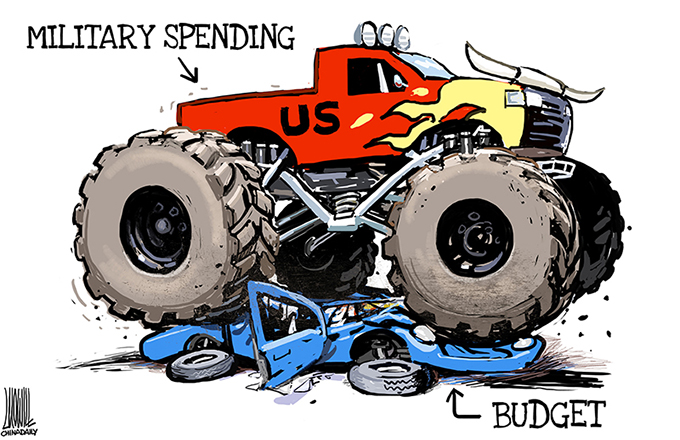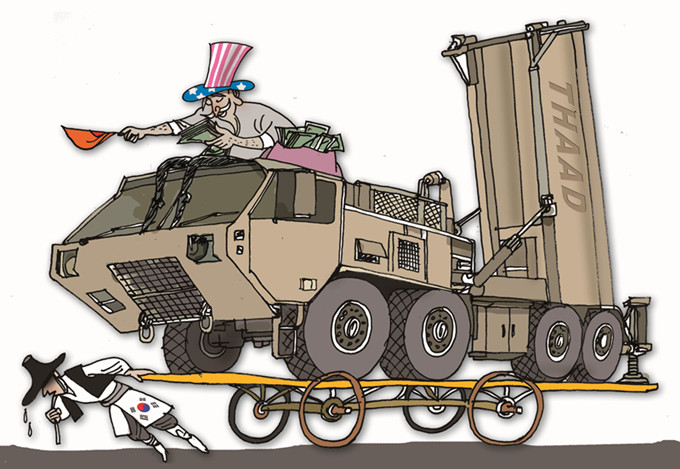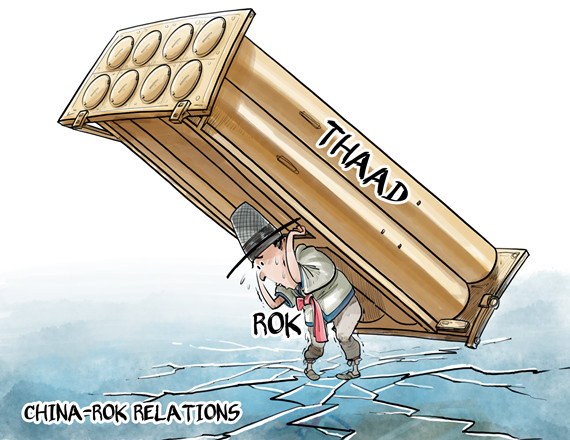No need for India to fall in US-Japan trap
 |
|
SHI YU/CHINA DAILY |
During a recent closed-door seminar endorsed by Washington-based Hudson Institute and New Delhi-based Vivekananda International Foundation, scholars from both countries said cooperation between India, the United States and Japan is necessary to "face the Chinese assertiveness" in the strategic Indian Ocean and Pacific regions.
Such insinuations are nothing new, except the emphasis that China has taken "an increasingly hard-line stance" on its territorial disputes in the East China Sea and the South China Sea. In the name of "strengthening mutual confidence and inter-operability", the three countries conducted the "Malabar" joint military exercise in Japan last year.
That Washington has started seeking closer defence ties with New Delhi and Tokyo does not justify their contain-China "mission". The previous US administration under Barack Obama embarked on the "rebalancing to Asia" strategy not long after China became the world's second-largest economy seven years ago. In doing so, Obama accelerated negotiations over the Trans-Pacific Partnership agreement that excludes Beijing, beefed up the US-Japan military alliance, and sent warships near China's islands in the South China Sea in the guise of "freedom of navigation".
Yet new US President Donald Trump has withdrawn from the TPP agreement in the wake of China and the Philippines deciding to shelve their maritime disputes in the South China Sea. Now that the Philippines cannot be provoked against China, it is not surprising that the US and Japan are looking to India. Tokyo has even encouraged New Delhi to compete with China in the African market.
New Delhi does have concerns over Beijing's increasing influence in the Indian Ocean region. It is worried that the Belt and Road Initiative (the Silk Road Economic Belt and the 21st Century Maritime Silk Road), consisting of the construction of the China-Pakistan and Bangladesh-China-India-Myanmar economic corridors, might chip away at its regional leadership. And India's strategic anxiety offers it a welcome reason to build a trilateral alliance with the US and Japan.
But the three-country mission, if designed to contain China, is not likely to work. As a leader of the Non-Aligned Movement founded in Belgrade in 1961, India attaches great importance to independent, non-aligned diplomacy and hence does not want to become a chess piece of any geopolitical game.
India is also a BRICS member that shares extensive interests with China in areas of global governance and globalization. Compared with Washington and Tokyo, New Delhi is not at the same level of development and does not necessarily share their common stance on Beijing.
As far as China-US relations are concerned, both countries should be motivated to cooperate rather than clash given their economic interdependence and shared interest in defusing the volatile Korean Peninsula situation. And Japan, like China, also faces mounting pressures from the possible adjustments in the US' fiscal and trade policy.
The truth is, China is not a security threat to regional stability. India's real concern is that China might challenge its dominance in the Indian Ocean region, while Japan is bothered more about its disputes with China in the East China Sea. What drives Washington to keep the two allies closer is its false perception that Beijing may weaken its alliances across the Indian and Pacific oceans.
There are multiple cooperative mechanisms that Beijing can use to help alleviate the three countries' concerns, and more importantly, avoid head-to-head confrontations. They share extensive interests, not direct territorial disputes, in safeguarding freedom of navigation and stability in the South China Sea and the Indian Ocean. In the long run, China could consider establishing a maritime cooperative organization with regional players including Russia, India and the Association of Southeast Asian Nations, and invite the US to join when the time is ripe.
The author is a professor of international relations at Renmin University of China, and a senior researcher at The Charhar Institute.



















